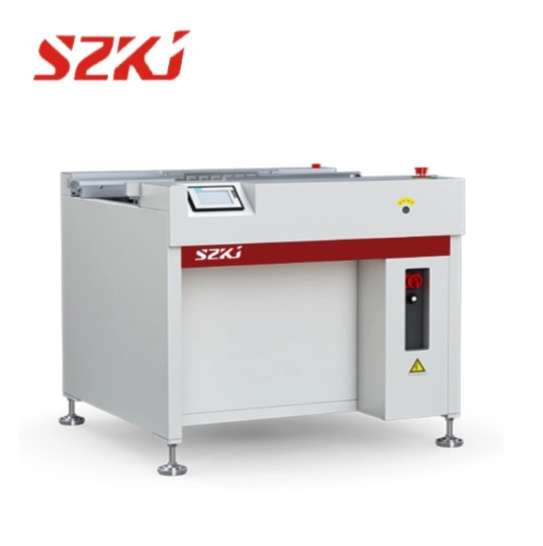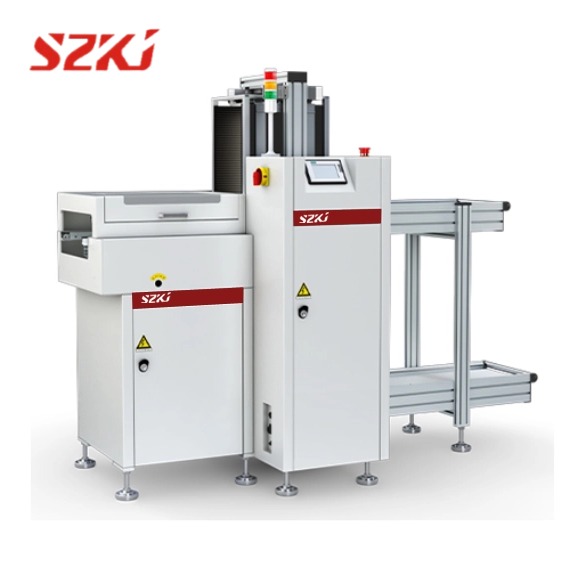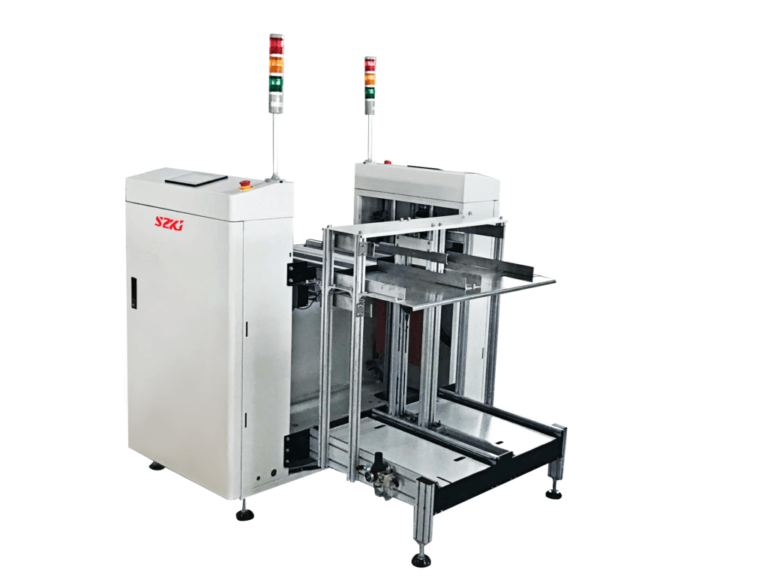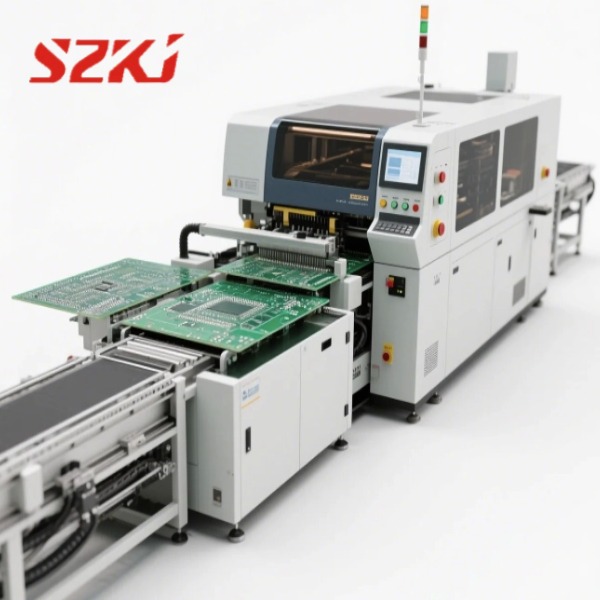Table of Contents
ToggleAn unloading conveyor system is a device that automatically transfers finished printed circuit boards (PCBs) or panels from one process, such as reflow soldering, to the next stage of inspection, testing, or packaging.
By removing manual handling, it ensures continuous workflow, reduces downtime, and minimizes the risk of product damage. For companies focused on small-scale SMT peripheral equipment, this system is not just an add-on, but a vital tool that supports the performance of larger machines.
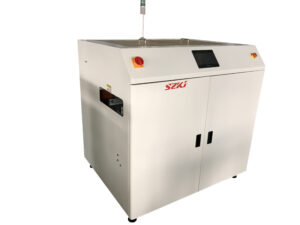
Why Unloading Conveyor Systems Matter
An unloading conveyor system helps bridge the gap between major machines on the line. Large equipment such as reflow ovens or wave soldering units can only perform at maximum efficiency if PCBs are fed in and removed at the right pace. Without proper unloading, the production line may stop, slow down, or rely on manual operators.
By automating the unloading process, manufacturers gain several advantages:
- Reduced manual handling – Operators no longer need to remove boards one by one, lowering labor requirements and the risk of human error.
- Balanced line flow–With buffer conveyors integrated, the system can temporarily hold boards if the next machine is not ready, preventing bottlenecks.
- Safer PCB transfer–Using antistatic belts and stable transport design, unloading systems protect sensitive electronics from electrostatic discharge (ESD) and physical stress.
- Consistent production rhythm–Continuous transfer of boards ensures that upstream equipment never stops unnecessarily, directly improving throughput.
These advantages show that a small piece of equipment can have a big impact on the entire SMT assembly line.
Technical Features of Modern Unloading Conveyor Systems
Today’s unloading conveyor systems are designed with flexibility and reliability in mind. Manufacturers of small-scale SMT support equipment often emphasize modular design, compact size, and adaptability. Some of the common features include:
- Modular structure: Units can be extended, shortened, or connected in different layouts to fit specific factory floor requirements.
- PLC control: Speed, width, and direction are managed through programmable logic controllers, ensuring precise control and easy adjustments.
- Touch screen interface: Operators can set up the machine, monitor performance, and diagnose errors quickly without complicated training.
- ESD protection: Belts and frames are made with antistatic materials, safeguarding PCBs against electrostatic damage.
- Adjustable height: Conveyors can be aligned with reflow ovens or other equipment, making integration simple and ergonomic.
- Error diagnosis and alarms: Some systems automatically detect jams, overloads, or misaligned boards, stopping the line safely and notifying operators.
- Customizable length and speed: Depending on production volume, the conveyor can be tailored to move boards at the exact rate needed.
These features highlight why the unloading conveyor system is more than a simple belt—it is an intelligent link that improves productivity.
Applications in SMT production
Although the unloading conveyor system is relatively small compared to reflow ovens or wave soldering equipment, its application range is wide. Typical uses include:
- After reflow soldering–Moving hot PCBs from the oven to the next stage safely, with belts designed to resist high temperatures.
- After wave soldering–Collecting boards once soldering is completed, preventing operators from handling hot or delicate assemblies.
- For inspection and testing stations – Delivering boards to AOI (automated optical inspection) or functional test systems without interruption.
- For packaging or storage – Transferring completed products directly into magazine unloaders or storage racks.
In each of these applications, the unloading conveyor system reduces the chance of human mistakes and ensures that boards flow seamlessly through the line.
Benefits for Small-Scale Equipment Providers
For companies that specialize in small SMT peripheral equipment, rather than building entire large-scale production lines, the unloading conveyor system is a valuable product to offer. It complements reflow ovens, loaders, and magazine systems by:
- Enhancing customer productivity–Clients who purchase auxiliary equipment gain higher efficiency without large investment.
- Providing flexibility–Compact conveyors can be used in different configurations, suitable for both large factories and smaller workshops.
- Adding reliability–By reducing manual handling, the system improves product quality and reduces scrap or rework.
This makes unloading conveyors a strategic solution for manufacturers who want to provide practical, cost-effective tools to their clients.
Key Considerations When Choosing an Unloading Conveyor System
When selecting the right unloading conveyor system for SMT lines, buyers should evaluate several factors:
- PCB size compatibility–Ensure the conveyor supports the minimum and maximum board dimensions in production.
- Conveyor speed and buffering capacity–Match the speed to the reflow oven or wave soldering machine, with buffer ability to handle uneven flow.
- Integration standards–Systems that follow SMEMA or similar standards will easily connect with other SMT equipment.
- Durability–High-temperature resistance, antistatic design, and solid frame construction are essential for long-term reliability.
- Ease of use–Simple interfaces and quick adjustments save time for operators.
- Expandability–Modular conveyors allow growth as production needs increase.
By reviewing these factors, manufacturers can ensure that their unloading conveyor system investment delivers long-term value.
Conclusion
The unloading conveyor system can automatically transfer PCBs from key equipment such as reflow ovens or wave soldering machines, thereby ensuring the continuity of the production line, improving efficiency and safeguarding product quality.
If you need to buy SMT small unloading conveyor system, welcome to SZKJ official website to purchase suitable products.

